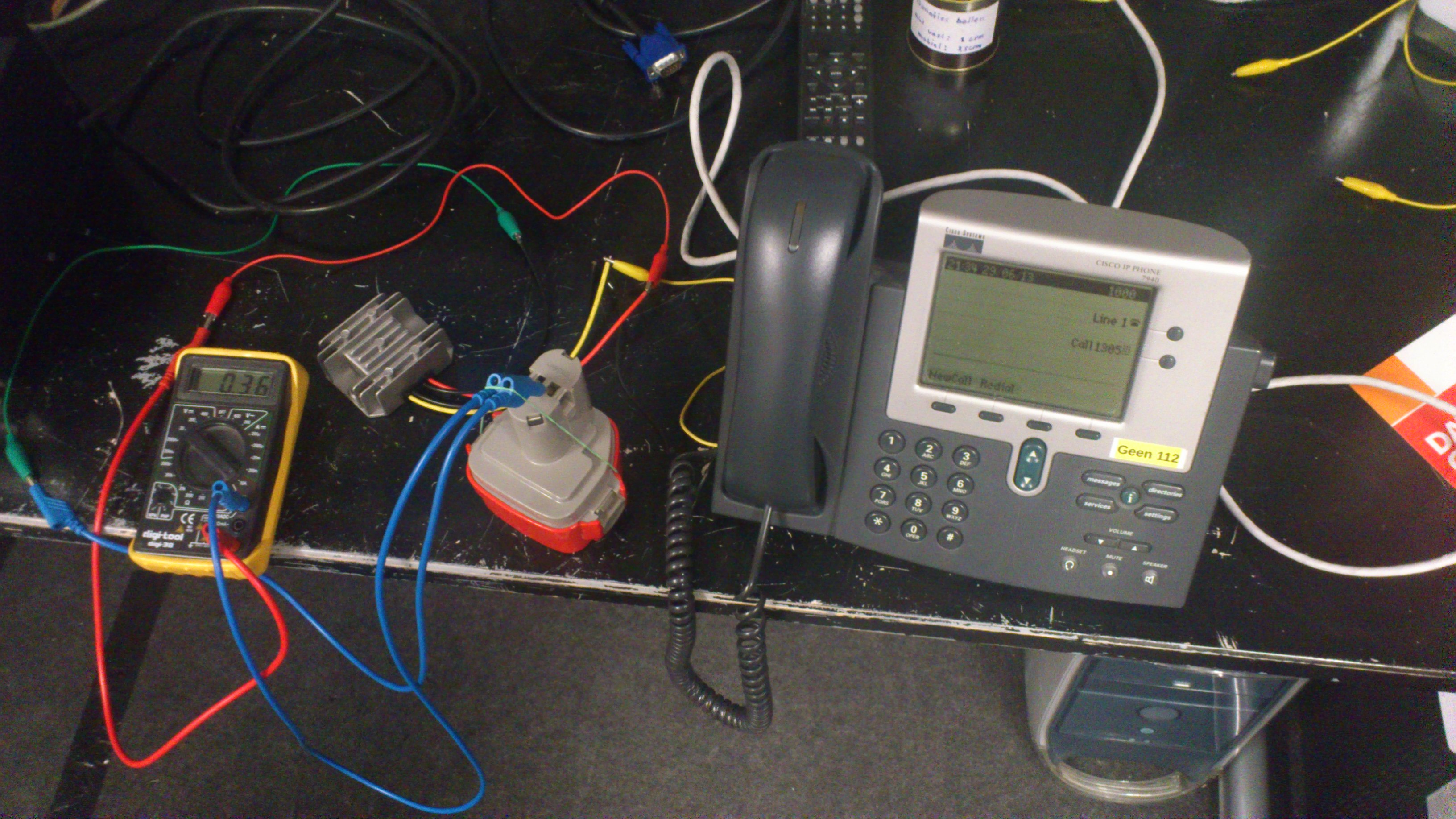Difference between revisions of "Guerrilla VoIP"
(added todo/done and link to hack cable) |
(updated todo/done) |
||
| Line 54: | Line 54: | ||
* [[Telephone system:Cisco PoE hack]] cable | * [[Telephone system:Cisco PoE hack]] cable | ||
* Cisco NL dialplan | * Cisco NL dialplan | ||
| + | * tested with battery; float charging device still has to be made (haven't measured how long it would run on a single charge though, but enough time to do some important phone calling) | ||
=== todo === | === todo === | ||
| − | + | * add some trunks | |
| − | + | * rewrite internal dialplan (actually, make two sets: event and in-field-'office') | |
| − | * add trunks | + | * design and create (or buy) small-sized float charger (13.8V 2A) with overcurrent protection, if needed |
| − | * | ||
| − | * | ||
[[Category:Telephony]] | [[Category:Telephony]] | ||
Revision as of 12:42, 5 October 2013
| Project: Guerrilla VoIP | |
|---|---|
| Featured: | |
| State | Active |
| Members | xopr |
| GitHub | No GitHub project defined. Add your project here. |
| Description | low cost communication node |
| Picture | |
| No project picture! Fill in form Picture or Upload a jpeg here | |
Contents
synopsis
Create a low cost communication node (with VoIP as a base), trying to connect as many as possible types of links, for example:
- copper/fibre/WiFi network
- DECT/POTS telephony
- SIP/SCCP
- HAM radio (or preferrably, CB radio: 27MC/PMR)
- copper/WiFi/USB uplink
It also could need some of the following functionality:
- PoE service (to drive phones, remote switches/accesspoints)
- battery supported/powered (in case of power failures/lack of power)
- Efficient power converter(s) when running on battery
- sturdy compact waterproof casing
So to make the first prototype, I chose the following:
- ammo box
- 7Ah battery
- step-down converter 12->5V
- step-up converter 12v->48V
- Fritz!Box 7270 (NAT, FxS, FxO, DECT)
- Raspberry Pi running FreeSWITCH and DHCP
- Raspberry Pi running FreeSWITCH and TFTP
- Netgear GS110TP (8xPoE + 2xSFP)
prototyping
Tested the following items:
- Two Raspberry Pis on a drill battery pack (step-down)
- uses 0.33A at approximately 12V
- Cisco CP7940 on a drill battery pack (step-up)
- uses something between 0.36A and 0.45A at approximately 12V
- Fritz!box has a switching regulator to 5V tested between 5.5V and 15V (drops off at 5.3V idle and elca at power supply segment is rated 16V)
- without WiFi, it peaks at 0.44A (12V), and idles at about 0.34A-0.38, which the webservice is saying 41%-43%, which means it would top at about 0.88A.
- With 15V power it idles at about 0.25A
- Netgear GS110TP PoE switch on a lab power supply (step-up)
- uses approximately 0.33A at 12V
- PoE switch with one phone powered (step-up)
- uses approximately 0.74A at 12V
- PoE hack adapter connected pin 1 (white-orange) and pin 3 (white-green) with 22K resistor.
- if the pre-standard CP-79x0 is connected, it doesn't power, when you unplug it, it will enable power within 5 seconds; plug in, and the phone boots.
- complete set on a lab power supply: PoE switch, one phone on a hacky cable, router two RasPis and my cell phone charging:
- uses about 2A@12V and 1.6@13.8V
done
- wired the stuff (except for the battery)
- Telephone system:Cisco PoE hack cable
- Cisco NL dialplan
- tested with battery; float charging device still has to be made (haven't measured how long it would run on a single charge though, but enough time to do some important phone calling)
todo
- add some trunks
- rewrite internal dialplan (actually, make two sets: event and in-field-'office')
- design and create (or buy) small-sized float charger (13.8V 2A) with overcurrent protection, if needed

